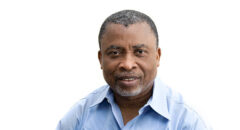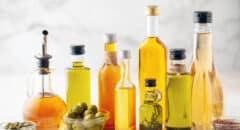
In emergency situations, such as fires, hurricanes and power outages, local officials and relief workers cannot necessarily reach everyone immediately. Help may not arrive for hours...or even days. Which is why you and your family need to be prepared ahead of time, since you won't have time to shop or search for the supplies you will need once a disaster strikes.
Some of the top tools that can save the lives of you and your family include:
In case a fire...
Smoke Alarms. Install many. Mount one on every level of the house and outside all sleep areas. Be sure to check the batteries regularly by testing them once a month and replacing them at least once a year, unless you have units powered by 10-year lithium batteries (these still require monthly checking). Some smoke alarms are connected to the household electrical system and may or may not have a battery backup. It’s important to test these monthly, too. Regardless of the power source, buy new smoke alarms every 10 years. Also, be sure to keep alarms free of dust and debris, which can cause malfunctions. Lastly, never disable an alarm.
Fire Extinguishers. Use multipurpose extinguishers. These are labeled as type “ABC,” meaning they are equipped to fight fires caused by ordinary combustibles, flammable liquids, and electrical equipment. Make sure you have one in the kitchen, the garage, the basement, and wherever your furnace and hot-water heater are located. Don't forget to inspect them regularly. If the gauge doesn’t read full (100 percent), have the extinguisher serviced if it’s rechargeable and buy a new one if it’s not. Also, replace old extinguishers, since dry chemicals in them degrade and become less effective over time. Lastly, know how to use your extinguisher: once you have squeezed the lever, sweep the nozzle from side to side at the base of the flames until the fire appears to be out.

In case of a hurricane:
If a storm is headed your way, it's important to set aside non-perishable food, water and clothing for three to seven days, as well as vital documents, a supply of prescription medications, personal hygiene items, cash, and a first aid kit. Place everything in a plastic bag or waterproof container.
Other critical, supplies to have on hand include:
- At least a 3-day and preferably a 7-day supply of water (one gallon per person per day)
- Formula, diapers, and other baby supplies
- Manual can opener
- First aid kit
- Cell phones and battery-powered cell phone chargers
- Battery-powered radios and flashlights
- Batteries
- Blankets, sleeping bags, books, and games
In case of a power outage:
Approach Perishable Food With Caution
When the power goes out, that food in the fridge will last only so long. You should throw away any perishable food in there if your power has been off for four hours or more.
Your freezer, if full and left unopened, will keep frozen food safe for 48 hours. You must cut this safe window in half to 24 hours, however, if your freezer is only half full. But keep in mind that this is only if you keep that freezer door shut. Every time you open it, some of the cold air escapes - effectively speeding up the clock for when your food might spoil.
Beyond these guidelines, exercise common sense. Does your food have an unusual texture, odor or color? Throw it away. This is when the old rule, "When in doubt, throw it out," should be in full effect.

Use generators carefully
In a blackout, many view generators as a lifesaver. But use them improperly, and they can actually put your life in danger.
The reason for this is that generators, as they run, emit a gas known as carbon monoxide. Carbon monoxide is both colorless and odorless - in other words, it is impossible for us to detect it on our own. Yet, each year carbon monoxide poisoning sends approximately 15,000 Americans to the emergency department and kills nearly 500, according to CDC statistics.
To keep you and those who live with you safe,...
...never use a generator inside your home or garage. This rule applies even if the windows and doors are open. Nor should your generator be located right outside your residence; make sure that it is located 20 or more feet away from your home's doors and windows. Additionally, make sure that you have carbon monoxide monitors - battery-powered or with a battery backup - near every sleeping area in your home.
In any emergency:
Plan Escape Routes
Draw a map of your house. Plan at least two escape routes out of every room. Windows and indoor and outdoor doorways are all possibilities. Discuss these routes with every family member.
Use flame-resistant safety escape ladders. Place them, preassembled, near a window on each floor of your home. A 13-foot ladder should be long enough for a two-story home. If bedrooms are on opposite ends of a floor, store a ladder in each room.
Make sure your address is visible. Emergency-aid vehicles need to be able to locate your home as fast as possible.
Pick an outdoor meeting place. Make sure it's a safe distance from your house. Choose two meeting spots. Sure, in the best case of a worst-case scenario, your family will be together when an earthquake rumbles beneath your town. But if you’re scattered, you’ll need a meeting place. Pick two spots where your family can congregate if conditions allow: one close to your house, in case of something like a fire, and one outside your immediate neighborhood, in case nearby streets are closed.
Choose a contact person. This person should be a family member or so friend who lives out of state. After a disaster, it may be easier to call long distance than locally. As soon as it’s possible, each member of your family should call that person to let his or her location be known.
Learn What You Need To Stay Safe
Get informed. Contact the local chapter of the American Red Cross or Federal Emergency Management Agency (FEMA) (to find one near you, go to fema.gov). Ask for information about the types of disasters you may encounter, as well as their timing and severity, especially if you're new to an area and unaware of potential risks.
Ask questions. Find out about community-response plans, potential sites for emergency shelters, and warning procedures from the Red Cross or FEMA. Some level of chaos breaks out no matter how small a disaster. So, the more you know beforehand, the less frantic you'll feel.
Prepare An Emergency Kit
Keep your survival essentials handy. Store the goods in a waterproof container and place it in an easily accessible location. Your kit should allow you to be self-sufficient for at least three days.
Do a disaster dry run. One weekend night, unplug the phone, turn off the lights, don’t use any faucets or the stove, and see how well packed you are. You’ll discover little things, like you packed C batteries when you needed D’s for the flashlight, or you could have used a deck of cards for entertainment.
Protect Those Less Able to Protect Themselves
In times of disaster, communities usually come together to make sure that everyone makes it through safe. This is a helpful ethic to promote in your own community, and it often saves the lives of those most vulnerable.
If you know or live close to someone who is elderly, has special needs or is homebound, check in on them. Make sure that they, too, have what they need in terms of shelter, food, water and warmth. This is also a good time to check in with institutions where elderly family members or others may be staying. Make sure that you are aware of any emergency measures that are being put into place and understand what is needed of you.
Last but not least, make sure that your pets are safe and secure. Many shelters will not take pets in the event of an emergency, so it is up to you to protect them by checking with your local authorities to find what pet shelters are available.








